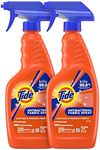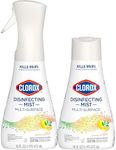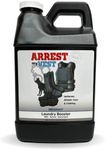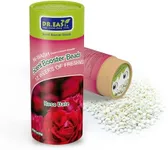Buying Guide for the Best Antibacterial Fabric Sprays
Choosing the right antibacterial fabric spray can help you maintain a clean and hygienic environment, especially for fabrics that are difficult to wash frequently. These sprays are designed to kill bacteria and eliminate odors, making them a convenient solution for freshening up your home, car, or office. When selecting an antibacterial fabric spray, it's important to consider several key specifications to ensure you get the best product for your needs.Active IngredientsActive ingredients are the chemicals in the spray that kill bacteria and other microbes. Common active ingredients include ethanol, benzalkonium chloride, and hydrogen peroxide. The effectiveness of the spray largely depends on these ingredients. Ethanol-based sprays are generally effective against a wide range of bacteria and viruses, making them a good all-purpose choice. Benzalkonium chloride is effective against bacteria and some viruses but may not be as strong as ethanol. Hydrogen peroxide is a powerful disinfectant but can be harsh on some fabrics. Choose a spray with active ingredients that match your specific needs, such as a broad-spectrum disinfectant for general use or a milder option for delicate fabrics.
Fabric CompatibilityFabric compatibility refers to how well the spray works with different types of fabrics without causing damage. Some sprays are formulated to be safe for a wide range of materials, including cotton, polyester, and wool, while others may be too harsh for delicate fabrics like silk or lace. It's important to check the label for fabric compatibility to avoid damaging your items. If you have a variety of fabrics to treat, look for a versatile spray that is safe for multiple types of materials. For specific fabrics, choose a spray that is explicitly designed for that material.
ScentThe scent of an antibacterial fabric spray can significantly impact your experience. Some sprays have a strong chemical odor, while others are scented with fragrances like lavender, citrus, or fresh linen. If you are sensitive to smells or prefer a specific fragrance, this is an important factor to consider. Unscented options are also available for those who prefer no added fragrance. Choose a scent that you find pleasant and that complements the environment where you will be using the spray.
Drying TimeDrying time refers to how quickly the spray dries on the fabric after application. This can range from a few minutes to over an hour, depending on the formulation. A faster drying time is more convenient for items that you need to use or wear shortly after treatment. However, sprays with longer drying times may provide more thorough disinfection. Consider your schedule and how quickly you need the fabric to be ready for use when choosing a spray with an appropriate drying time.
Ease of UseEase of use encompasses how simple and convenient the spray is to apply. This includes the design of the spray bottle, the spray pattern, and whether the product requires any additional steps like wiping or rinsing. A well-designed spray bottle with an even spray pattern can make application quick and easy. Some sprays are ready-to-use, while others may need to be diluted or shaken before use. Choose a product that fits your lifestyle and preferences for hassle-free application.
SafetySafety is a crucial consideration, especially if you have children, pets, or sensitive individuals in your household. Check for any warnings or precautions on the label, such as flammability or potential skin irritation. Some sprays are formulated to be non-toxic and safe for use around kids and pets. If safety is a top priority, look for products with certifications or endorsements from reputable health organizations. Always follow the manufacturer's instructions for safe use.




















